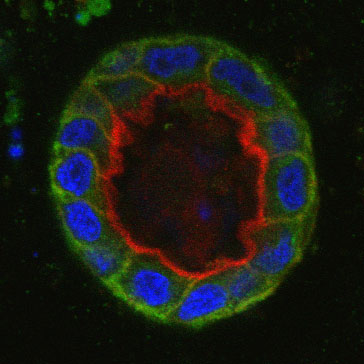 |
 |
|
Bruno Antonny |
||
Inst. de Pharmacologie Moléculaire et Cellulaire, CNRS and Univ. de Nice |
||
+33 (49) 395-7775, antonny@ipmc.cnrs.fr |
Sensing Membrane Curvature with ALPS Motifs |
| Session 3, Sat. Nov-06, 11:00 |
Changes in membrane curvature are inherent of many events that occur at the surface of membrane-bound organelles; e.g. when transport vesicles bud from donor membranes and then fuse with acceptor membranes. Here, I will discuss the use by proteins of various structures and functions of an amphipathic helical motif, the ALPS (Amphipathic Lipid Packing Sensor) motif, that specifically adsorbs at the surface of highly curved lipid membranes (R < 50 nm) compared to flatter ones. Interestingly, the chemistry of the ALPS motif is almost the mirror image of the α-synuclein helix, which has also the ability to sense membrane curvature. The relationship between the peculiar chemistries of the ALPS motif and of α-synuclein and their ability to sense membrane curvature will be presented. For both amphipathic helices, it seems that the strong unbalance between the polar and non-polar faces exacerbates the sensitivity to membrane curvature. Experiments in yeast show that the ALPS motif and α-synuclein are adapted to highly curved membranes of the early and late secretory pathways, respectively. This suggests that these vesicles exhibit major differences in both lipid electrostatics and lipid packing defects.Three examples of regulation of membrane remodeling events by ALPS motifs will be presented. This includes the assembly-disassembly cycle of a protein coat, the asymmetric tethering of flat and curved membranes by a molecular string, and, lastly, the transport of sterols between membranes of different curvature and lipid composition. Ambroggio E, Sorre B, Bassereau P, Goud B, Manneville JB, Antonny B. ArfGAP1 generates an Arf1 gradient on continuous lipid membranes displaying flat and curved regions (2010). EMBO J. 29:292-303. |